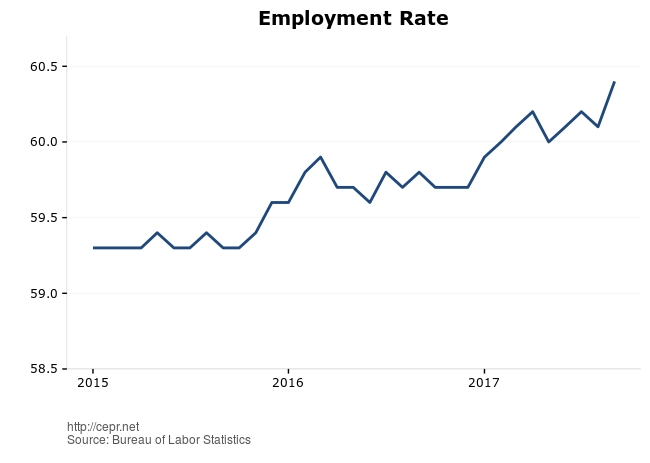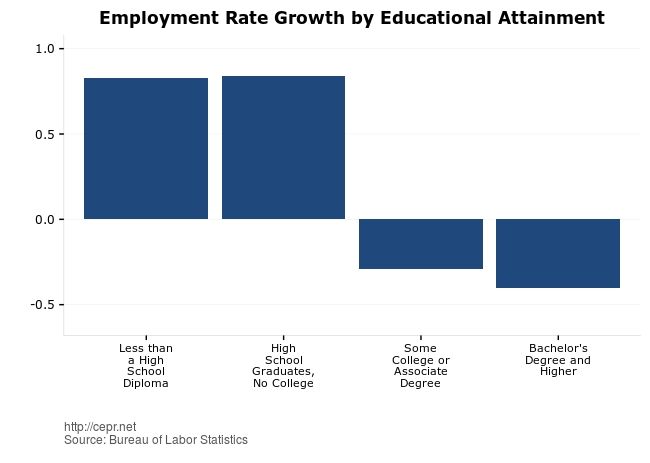October 20, 2017
Last week, Donald Trump met for an hour-long meeting with economist John Taylor, who is now regarded as a potential candidate for the opening Fed chair seat, currently occupied by Janet Yellen. Taylor, the man behind the Taylor Rule, which attempts to set rules-based guidelines for the Fed regarding inflation and interest rates, is among the candidates for the chair position, as is Kevin Warsh. Nominating either of these candidates would be a tremendous step backward for the economy, especially following the recent and promising signs of growth for those who are less educated, as well as for blacks and Hispanic/Latinos, since the devastation of the recession.
The Federal Reserve website suggests that the lowest level of unemployment that the US can withstand without causing excessive inflation is within a range of 4.5 and 6 percent. However, in this past quarter in 2017, unemployment averaged 4.3 percent, well below the Fed’s accepted range with no signs of inflation above the target rates. Following strict rules-based policy, as celebrated by economists like Taylor and Warsh, would have led to the maintenance of higher than necessary unemployment rates, as well as a loss in employment, and would contribute to slowing the already lagged recovery since the financial crisis. According to an analysis conducted by the Federal Reserve Bank of Minneapolis, had the Fed complied with the generally accepted rules surrounding target unemployment levels, 2.5 million people would have been kept out of work.

Shown above is the employment rate since 2015. When comparing the first half of 2015 to the last quarter of 2017, there has been a 0.92 percent increase in the overall employment rate. This means that by maintaining low interest rates and not following rules-based policies such as the Taylor Rule, the Fed has provided 2.5 million additional jobs, as mentioned in the analysis by the Fed’s Minneapolis bank. In particular, these opportunities have gone to those who are less educated as well as to people of color, including blacks and Hispanics/Latinos.
If the Fed’s anxieties surrounding inflation supersede its dual mandate calling attention to the importance of full employment and its benefits, the Fed will further and disproportionately hurt those who have been most affected by the recession.
Below is the Employment Rate Growth by Educational Attainment from 2015 compared to the first nine months in 2017. The average employment rate increased by 0.83 for those with less than a high school diploma, from 41.79 to 42.62. For high school graduates, the increase was comparable with a rate of 0.84. As shown below, the increases in the employment rate have disproportionately benefited those who are less educated, with those with less than a high school diploma and high school graduates with no college seeing the most benefits during this time. Those with some college saw a -0.29 decline in employment rate growth, and those with bachelor’s degrees and higher saw a -0.4 rate drop. Less educated people, along with other marginalized groups, are often those hit the hardest during recessions and they disproportionately benefit the most from a tighter labor market and policies that push toward full employment.

Candidates like Taylor and Warsh would not prioritize the full employment mandate, nor would they address the unacceptable rates of unemployment for the most disadvantaged in our country. Although we have not reached a full recovery, the implications of candidates like these would mean an overall loss in employment opportunities for those who already face the most economic barriers, including those who are less educated. We cannot afford to give into anxieties surrounding inflation that are both costly and unnecessary and have the potential to reverse the vital gains in overall employment seen over the past few years, and especially the gains by our most vulnerable populations.






